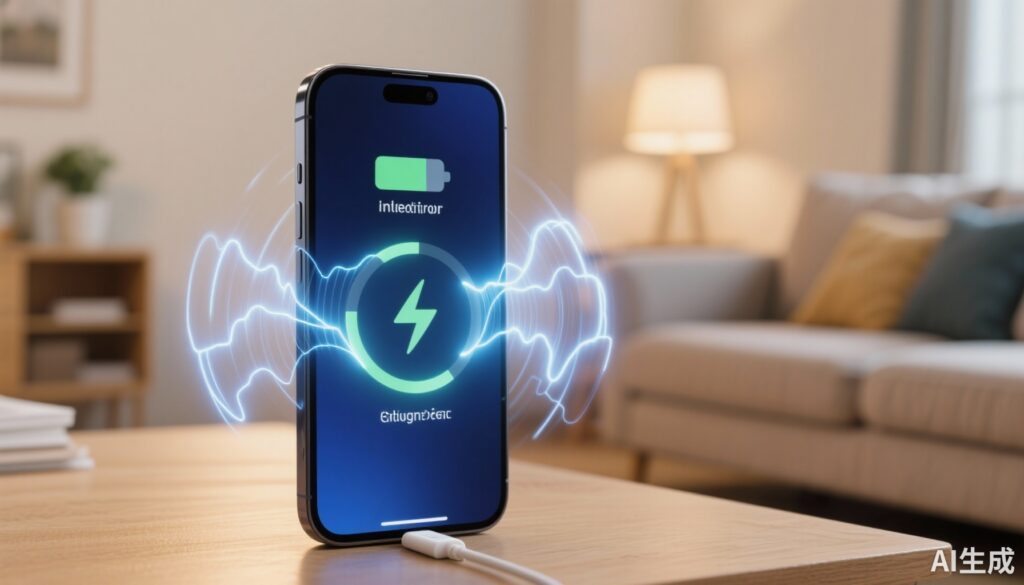Introduction: The Ubiquitous Smartphone and Concern over Radiation
In today’s digital era, smartphones have become indispensable companions, often accompanying us nearly 24/7. However, concerns about the potential health effects of electromagnetic radiation emitted by mobile devices persist, particularly when phones are charged. A recent study by the Jiangsu Electronic Information Product Quality Supervision and Inspection Institute sheds light on how phone charging affects electromagnetic radiation levels, quantified as the Specific Absorption Rate (SAR). This article explores what electromagnetic radiation entails, the implications of charging on radiation levels, key scientific findings, and practical guidance for safe smartphone use.
Understanding Electromagnetic Radiation and Its Effect on the Human Body
Electromagnetic radiation (EMR) is energy emitted in the form of waves or particles from electromagnetic sources, including cell phones. When the human body is exposed to EMR, tissues absorb some of this energy. This absorption can cause molecular vibrations within tissues, leading to thermal effects — a slight increase in tissue temperature. More so, non-thermal effects have also been observed, such as changes in white and red blood cells and potential cellular damage. Both effects underline why limiting unnecessary exposure is prudent, even though typical consumer devices operate well within safety limits.
What Is SAR and Why Does It Matter?
The Specific Absorption Rate (SAR) is a universally recognized metric that measures the rate at which the body absorbs electromagnetic energy during exposure. It is expressed in watts per kilogram (W/kg) and is pivotal in assessing safety standards. Regulatory standards, such as China’s GB 21288-2022, cap the maximum permissible SAR value at 2.0 W/kg averaged over 10 grams of biological tissue for a six-minute exposure to safeguard human health.
Investigating How Charging Influences Radiation Levels: The Study Approach
Researchers aimed to quantify how charging a phone influences its electromagnetic emissions. Using the sophisticated DASY SAR intelligent testing system—which accurately simulates the human head and maps electric field distribution—the study evaluated SAR values under varying conditions.
Phones were tested while connected to chargers of three power ratings: 20 W, 88 W, and 150 W, investigating how charging power affects emissions. Additionally, researchers examined phones with different battery levels: below 20%, between 20% and 80%, and above 80%, both during charging and while idle (not charging). To ensure reliability, the team conducted rigorous system validations and measured the dielectric properties of simulated tissue fluids to verify compliance with testing standards.
Key Findings: Charging Significantly Increases Electromagnetic Radiation
The results were clear and consistent:
– Phones emit higher SAR values when charging compared to when not charging.
– Higher-charging power led to greater radiation. For instance, the 150 W charger induced the highest SAR among tested devices.
– Using the phone while charging further increased radiation exposure.
Additionally, the study revealed that SAR values tend to be lower when the battery is below 20%, particularly in data transmission mode. Once battery levels exceed 20%, the radiation increases significantly, both during charging and at rest. Interestingly, the location of SAR hotspots did not change with charging status — typically appearing near the phone’s ear-contact area during voice calls and near the back or top of the device in data transmission mode.
Is Increased Radiation from Charging Dangerous?
Despite the noticeable rise in electromagnetic radiation during charging, the study’s reassuring conclusion is that all measured SAR values remained well below the international safety limits. The exposures were comfortably within the 2.0 W/kg threshold defined by China’s GB 21288-2022, indicating that normal use poses no significant electromagnetic hazard to users.
Practical Tips to Minimize Electromagnetic Radiation Exposure
Although the measured radiation levels are safe, prudence suggests simple strategies to minimize unnecessary exposure:
1. Avoid using your phone while it is charging to reduce radiation emission peaks.
2. Unplug the charger promptly after the phone reaches full charge to minimize duration of elevated radiation.
3. Use headphones or speakerphone during calls to reduce the phone’s proximity to the head.
4. Limit smartphone use time overall to reduce cumulative exposure.
These recommendations not only reduce potential radiation exposure but may also prolong your phone’s battery life and promote safety.
Case Illustration: John’s Experience
John, a 32-year-old software engineer, often used his smartphone extensively, including browsing social media and making calls while charging during work hours. After learning about the study’s findings, John decided to avoid phone use during charging and switched to headphones for calls.
Over several weeks, he noted no discomfort and felt reassured about the safety of his phone habits. His adjustments reflected informed behavior advocating a healthy balance between technology use and safety.
Conclusion: Balancing Convenience with Safety
The Jiangsu Electronic Information Product Quality Supervision and Inspection Institute’s research provides critical clarity: phone charging does increase electromagnetic radiation emission, especially with higher power chargers and while actively using the device during charging. However, current exposure levels remain safely below established limits.
Users can further reduce exposure by adopting simple precautions such as avoiding phone use while charging and using hands-free options. Continuing research and public education play vital roles in promoting safe, informed technology use without unnecessary fear.
References
1. GB 21288-2022 National Standard of the People’s Republic of China: Safety of mobile communication devices — limits for electromagnetic radiation exposure.
2. Jiangsu Electronic Information Product Quality Supervision and Inspection Institute. Measurement report on SAR values during mobile phone charging under different power inputs, 2023.
3. World Health Organization. Electromagnetic fields and public health: mobile phones. WHO Fact Sheet No. 193, updated 2020. https://www.who.int/news-room/fact-sheets/detail/electromagnetic-fields-and-public-health-mobile-phones
—
This article aims to inform the public and health professionals about the realities of electromagnetic radiation during mobile phone charging, offering reassurance based on empirical evidence and practical guidance for everyday smartphone users.



